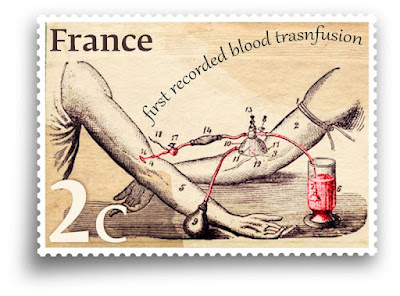The first successful human blood transfusion was performed on June 15, 1667, by Dr. Jean-Baptiste Denys, a French physician to King Louis XIV. Dr. Denys transfused the blood of a sheep into a 15-year-old boy, successfully treating him without immediate adverse effects. This pioneering procedure marked the beginning of the study and practice of blood transfusion, though it was fraught with ethical and medical challenges in its early stages.
Key Points:
Dr. Jean-Baptiste Denys: Denys was a prominent French physician known for his innovative approaches to medical treatments.
The Procedure: Denys transfused the blood of a sheep into a human patient, which was a highly experimental and risky procedure at the time. The boy, who had been weakened by severe blood loss, showed temporary improvement after the transfusion.
Early Transfusions: Early blood transfusions often involved animal blood, leading to numerous complications and fatalities. The lack of knowledge about blood types and compatibility made these procedures highly dangerous.
Scientific and Ethical Challenges: The practice of transfusing animal blood into humans was met with significant ethical and scientific criticism. It led to legal restrictions and a temporary halt in further experimentation in some regions.
Advancements: It wasn't until the discovery of blood groups by Karl Landsteiner in 1901 and the development of blood typing and crossmatching techniques that blood transfusion became a safer and more effective medical practice.
Legacy:
- Modern Blood Transfusion: Today, blood transfusion is a routine and life-saving medical procedure, made safe by rigorous testing, blood typing, and matching protocols.
- Medical Milestone: Dr. Denys' early experiment, despite its crude methodology and associated risks, paved the way for significant advancements in hematology and transfusion medicine.
The historical significance of the first human blood transfusion highlights the evolution of medical science and the importance of continued research and ethical consideration in medical practices.

No comments:
Post a Comment